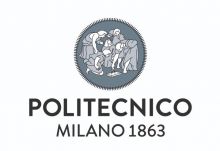The spread of Covid-19 threatened to bring additional complications to Italy’s already challenged academic system. Already lacking resources and struggling to compete internationally on technological mega-trends and in frontier research, universities faced reduced employment opportunities for their graduates as firms cut back on recruitment.
However, in reality, the pandemic has unexpectedly opened up extraordinary new opportunities.
The main reason is the injection of vast amounts of new research funding from the European Union’s €807 billion (£692 billion) Next Generation recovery package. Italy’s plan for spending its share, known as the National Recovery and Resilience Plan (NPRR), lists education and research among its key missions and pledges to devote about €30 billion to them between 2021 and 2026. At least half that sum will go to higher education, almost doubling the sector’s budget from public sources overnight.
Seeing these numbers, it is no exaggeration to say we are about to embark on something truly unprecedented. The NPRR, approved by the European Commission at the end of June, is based on two main pillars: enhancing education, both in terms of contents and services, and supporting innovation and technology transfer from research to business. The recovery fund will boost renovation projects, research endeavours, innovation clusters and technology transfer, all of which will help attract researchers and high-quality students. Above all, it will slow Italy’s brain drain and strengthen the bond between public and private sectors.
With this in mind, nearly a quarter of the resources are allocated to people and talent development, mainly researchers, doctoral candidates and research managers. Another 16 per cent will go to students, in the form of scholarships, mentoring and housing grants. These human capital investments will be crucial for Italy to keep up with global trends, such as the green transition and digitalisation.
With significant funds also devoted to infrastructure, innovation ecosystems, national research centres and national research projects, the NPRR recognises that increased higher education spending is not merely a “nice to have” in terms of industrial development: it is essential.
While Italian research is known for its high standards, there is a gap in the conversion of results into economic benefits. That is why the development of technology transfer offices and research infrastructure is rightly fundamental to an economic recovery programme such as this. So too is the €1.5 billion devoted to increasing the number of industrially focused PhDs. Today, Italy has one PhD graduate for every 200 inhabitants aged 25 to 64 – half the OECD average and a sixth of the proportion found in neighbouring Switzerland. So this significant investment, including €600 million for innovative PhD programmes to meet businesses demands in strategic fields, is long overdue.
If the hoped-for long-term benefits are to be delivered, however, the crucial challenge lies in ensuring the rapid implementation of the NPRR. This will require two fundamental steps. First, rules and procedures must be simplified, reducing the burden of bureaucracy. Second, we must shake off the Italian habit of “pleasing rather than choosing”: of levelling down the system rather than promoting excellence. The point is not merely to mend what has been torn and spread the money equitably. The point is to look forward and design a new academic system that has the courage to differentiate its offer between those institutions that can, and indeed must, be internationally competitive and those required to meet important local needs.
But while implementation must be fast, results depend on sustaining this new emphasis. We cannot have the new course being continually questioned with each change of government; the NPRR promotes national interests that the pandemic has given us the opportunity to agree on across the political spectrum, and the politicians must not forget that in pursuit of electoral gain.
Equally, while the reforms are guided by national interest, their implementation depends on collaborating across borders and adopting an international approach. To this end, some universities, such as my own institution, Politecnico di Milano, have already embarked on this path by forging the IDEA League with four other leading European universities of technology (ETH Zürich, Germany’s RTW Aachen, TU Delft in the Netherlands and Sweden’s Chalmers University).
Moreover, our new 9,000m2 campus, funded via both private and public contributions and designed by the celebrated Italian architect Renzo Piano, may provide a model for Italy’s broader plans to tie together academia, civic society and industry. Symbolically, this “factory of ideas”, as Piano calls it, combines revitalised old structures with efficient new buildings designed around students’ and project leaders’ needs, in pursuit of an open and inclusive research environment.
The forthcoming EU investment may finally make these dreams of a connected, inclusive innovation system a reality, not just for Milan but across Italy.
Ferruccio Resta is rector of Politecnico di Milano and president of the Conference of Italian University Rectors.
Register to continue
Why register?
- Registration is free and only takes a moment
- Once registered, you can read 3 articles a month
- Sign up for our newsletter
Subscribe
Or subscribe for unlimited access to:
- Unlimited access to news, views, insights & reviews
- Digital editions
- Digital access to THE’s university and college rankings analysis
Already registered or a current subscriber? Login










